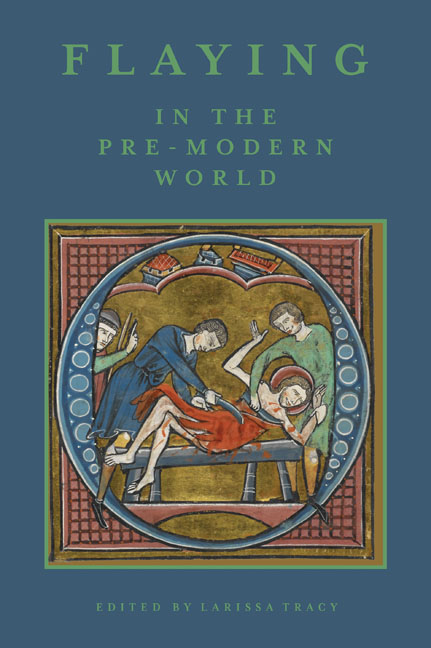9 - ‘Flesche Withowtyn Hyde’: The Removal and Transformation of Jesus’ Skin in the English Cycle Passion Plays
Published online by Cambridge University Press: 21 May 2021
Summary
IN all four extant medieval English dramatic cycles (York, Chester, Towneley and N-Town), there is a scene towards the end of the Passion plays in which the Virgin Mary stands at the base of the cross and grieves for the torture of her son while the apostle John comforts her and explains to her and to the audience the meaning of Jesus’ suffering. In the N-Town cycle (late 1400s?) the Virgin Mary's lament includes a description of her son's crucified body, helping the audience to visualize what the actor's body is intended to display:
Thow he had nevyr of me be born,
And I sey his flesch thus al totorn –
On bak, behyndyn, on brest beforn,
Rent with woundys wyde.
Nedys I must wonyn in woo
To see my frende with many a fo,
All to rent from top to too,
His flesche withowtyn hyde.
(ll. 238–45)Mary begins her account by reminding the audience of the mystery of the Incarnation (when God became man), testifying that ‘he had nevyr of me be born’. Mary refers here to her hymen, which remained intact after Jesus was born; though her body was the vessel in which God became mortal, his birth like his conception was a miracle. Yet though her body remains unbroken, his has now been torn and rent by flagellation. His bodily integrity has been split; his skin (‘hyde’) has been severed from his flesh.
The juxtaposition created at this moment between Mary's bodily integrity and Jesus’ bodily disintegration precedes the moment of transformation when Jesus will allow his mortal body to dissolve in order to reveal and reclaim his full divinity. Mary's presence creates a dichotomy between not only integrity and disintegration but also between the eternal and the mortal, the soul and the body. Though still divine, the Jesus in this scene is primarily read by Mary (and arguably the audience) as suffering, bleeding, dying flesh.
- Type
- Chapter
- Information
- Flaying in the Pre-Modern WorldPractice and Representation, pp. 240 - 260Publisher: Boydell & BrewerPrint publication year: 2017
- 1
- Cited by

